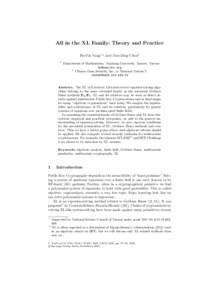<--- Back to Details
| First Page | Document Content | |
|---|---|---|
 Date: 2011-03-20 04:03:41Mathematics Algebra Monomial Generating function Equation solving Grbner basis |
Add to Reading List |
| First Page | Document Content | |
|---|---|---|
 Date: 2011-03-20 04:03:41Mathematics Algebra Monomial Generating function Equation solving Grbner basis |
Add to Reading List |